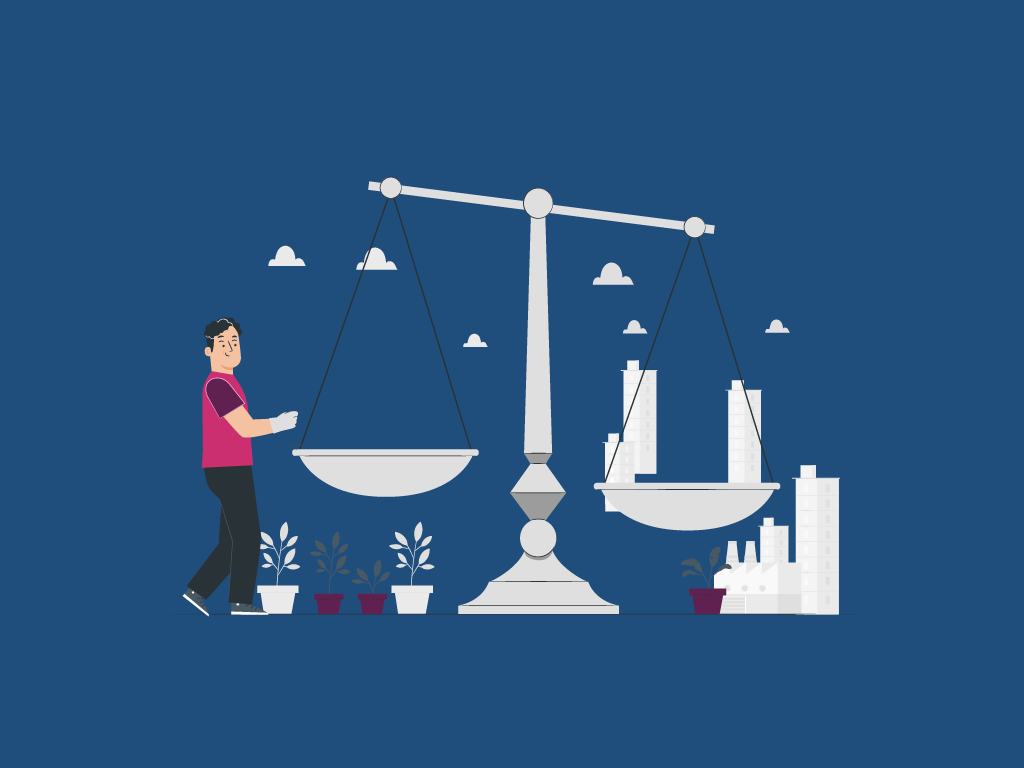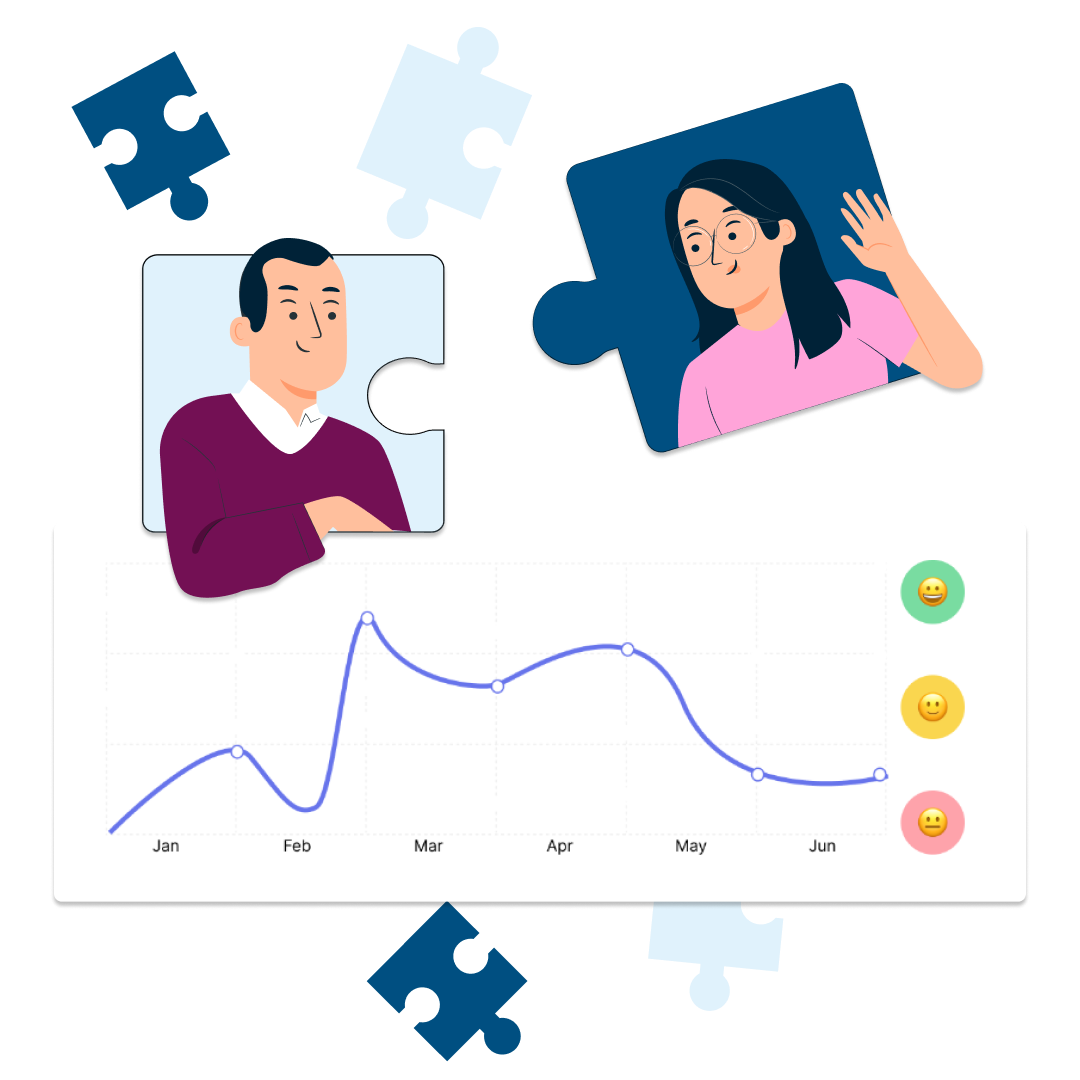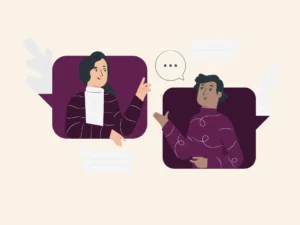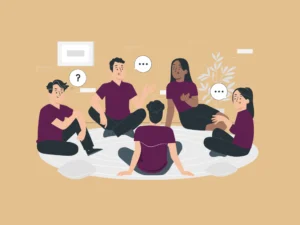The Cognitive Therapy Rating Scale (CTRS) is an evaluative tool used by mental health professionals to rate a therapist’s Cognitive Therapy (CT) skills during therapy sessions. Cognitive Therapy is a type of Cognitive Behavioral Therapy (CBT). It focuses on changing unhelpful thoughts, feelings, and behaviors that negatively affects an individual’s wellbeing.
The CTRS is used particularly in supervision and training. It helps supervisors, trainers and clinicians see how a therapist performs during a CT session. This is very useful in checking for areas of improvement which leads to therapists development. It also ensures that Cognitive Therapy is done the right way for optimal client care.
Purpose and Importance in Cognitive Behavioral Therapy (CBT)
The primary aim of the CTRS is to ensure accurate and effective implementation of CBT. The CTRS ensures that the right “steps” are used for the best possible therapeutic “outcome.”
This is very important as it is beneficial for training upcoming CBT therapists. The CTRS allows experienced supervisors to view a CBT session and provide constructive feedback. This feedback enables the new therapist to sharpen their skills and build proficiency. Overall, the CTRS helps ensure that clients receive top-notch care.
Development and Background of the Cognitive Therapy Rating Scale
Origins by Aaron T. Beck and Jeffrey Young
The CTRS was created by two notable personalities in psychology- Dr. Aaron T. Beck and Dr. Jeffrey Young. Dr. Beck is widely known as the father of cognitive therapy as he developed cognitive therapy as far back as the 1960s. He needed to ensure that his new therapy was properly studied and taught to novel therapists, hence the development of the CTRS.
He worked alongside Dr. Young, known for developing Schema Therapy. They developed the first version of the CTRS. This was done with the intent to create a tool that reliably assesses how well CBT was administered. This helped to standardize the therapy and ensured the therapy was reliable and effective.
Evolution and Adoption in Clinical Practice
The CTRS(Cognitive Therapy Rating Scale) has been modified and improved over the years. These changes make it more accurate, helpful, and easier to use when rating a therapist’s cognitive therapy skills. The updates were made because cognitive therapy is an evolving field. More therapists now have a better understanding of cognitive therapy. There is also a growing need for high-quality mental health care. These changes help make the tool more important to apply in real sessions.
The CTRS has become a widely accepted tool. It is used in tertiary training programs and mental health clinics. One major reason for this was its usefulness and practicality. The CTRS gives clear guidelines on what a good cognitive therapy session should look like. Before now, it was difficult to state what a good CBT therapist should do. The CTRS now provides a common language and a standard that makes it easy to learn, teach, and research CBT.
Structure of the Cognitive Therapy Rating Scale
The CTRS consists of different parts. Each part treats different important aspects of CBT skills.
Overview of the Items
The CTRS consists of 11 items assessing varying aspects of a therapist’s performance. These skills include both general therapeutic skills and CBT-specific skills. They include:
- Agenda
- Feedback
- Understanding
- Interpersonal Effectiveness
- Collaboration
- Pacing and Efficient Use of Time
- Guided Discovery
- Focusing on Key Cognitions or Behaviors
- Strategy for Change
- Application of Cognitive-Behavioral Techniques
- Homework
Rating Scale (Poor to Excellent)
Items on the CTRS are rated using a Likert scale with even-numbered descriptions (0, 2, 4, 6). Odd numbers are used to rate performance that falls between the descriptors. The scale points are defined as:
0: Poor
1: Barely Adequate
2: Mediocre
3: Satisfactory
4: Good
5: Very Good
6: Excellent
The total score ranges between 0 to 66. A therapist with a score of 40 and above is indicated to be competent.
Domains Assessed
The 11 items of the CTRS are divided into three domains, with each having a sub-domain:
- Session Structure: This area assesses how the therapist arranges and oversees the therapy session. It includes:
- Agenda: The therapist’s ability to establish a collaboratively accepted agenda with the client, that highlights particular goals or issues.
- Time Management and Effective Use of Session: This describes the therapist’s expertise in organizing therapy time effectively. It also assesses the therapist’s ability to manage the flow of conversation, and pacing the session suitably.
- Assignments: This evaluates the therapist’s effectiveness in integrating and discussing assignments that are pertinent to cognitive therapy.
- CBT Techniques: This aspect evaluates the therapist’s use of particular CBT methods, including:
- Guided Discovery: This assesses the therapist’s proficiency in utilizing guided discovery. Guided discovery involves investigating the mental health challenge and assisting the client in arriving at their own insights.
- Emphasizing Key Thoughts or Actions: This deals with the therapist’s expertise in drawing out vital points. It also evaluates their skills in focusing on specific thoughts, meanings, beliefs, or actions related to the mental health challenge identified.
- Change Strategy: This assesses the quality of the therapist’s approach to change. It also evaluates how the therapist integrates suitable CBT techniques in a coherent and consistent manner during the session.
- Implementation of CBT: This evaluates the adeptness with which the therapist employs cognitive-behavioral techniques throughout the session.
- Therapeutic Relationship: This area evaluates the relational dynamics within the therapist-client interaction, which includes:
- Feedback: This is the therapist’s skill in soliciting and addressing client feedback to ensure clarity and satisfaction with the session.
- Comprehension: This is the therapist’s ability to understand the client’s “internal reality”. It is also their ability to express this understanding through suitable verbal and non-verbal cues. Comprehension also deals with the therapist’s ability to showcase empathic abilities.
- Interpersonal Effectiveness: This is the therapist’s exhibition of warmth, concern, confidence, authenticity, and professionalism.
- Collaboration: This is the therapist’s capability to build rapport and work together with the client. It is also their ability to motivate them to play an active part in the session as a “team.”
Administering the Cognitive Therapy Rating Scale
Using the CTRS requires a bit of preparation. Users are required to understand when and how to use it, and who is qualified to rate.
When and How to Use the Scale
The CTRS is mainly used to assess the skills of therapists during a single CBT session. It could be used during different stages of a therapist’s training or career.
- During training: Supervisors often rate the performance of new therapists using the CTRS. This is useful in keeping track of their progress and pointing out areas for improvement.
- For ongoing supervision: Experienced therapists are not left out as they still benefit from supervision. The continuous use of the CTRS ensures that their CBT skills are up to date. It also helps them to get feedback on challenging cases.
- In research: If researchers want to test how well CBT works, they use the CTRS. It confirms that therapy is being done correctly, which makes study results more reliable.
To use the scale, a trained evaluator/supervisor observes the CBT session and then completes the CTRS afterward.
Methods: Live Observation, Audio/Video Recordings, Transcripts
- Live Observation: In this method, the observer is present in the room or observes the session behind a one-way mirror. This lets them see body language and little details. A live observation is very good for accurate assessment. However, the disadvantage is that clients or therapists may feel uncomfortable or may become self-conscious.
- Audio/Video Recordings: Audio or video recordings are the most common ways to evaluate sessions. The recording can be watched or listened to later. Video is often preferred because it shows facial expressions and gestures, providing more useful information. The method also allows raters to pause, rewind, and review aspects of the session.
- Transcripts: Transcripts are less commonly used, however, some raters rate using written scripts of sessions. Transcripts show the exact words said but do not show non-verbal cues such as tone, or body language. As a result, transcript assessments are less reliable.
Training Requirements for Raters
Before a rater picks up the CTRS to begin scoring, they require proper training for accuracy and effectiveness. As part of the basics of their training, raters first learn all there is to know about CBT. They also learn about the items on the scale and behavior or skills to look out for.
Trainee raters are required to watch several practice sessions and attempt to rate them. These scores are then compared with those of experienced raters. Reliability matters as the goal is for different raters to give similar scores for the same session. This is known as inter-rater reliability, as different scores would mean the scale is unreliable.
Scoring and Interpretation
After a rater observes a session and completes the CTRS, this is scored and interpreted. These numbers reveal the skills of the therapist being assessed.
Scoring Guidelines for Each Item
The CTRS consists of three subscales with each item scored using the Likert scale (0 – 6). That is, the rater assigns a score for each item, these scores are then added to form a total. Scores range between 0 and 66. Higher scores indicate that the therapist has a higher level of competence.
Interpreting Total Scores
- Below 30 – 35: indicates a need for more training or supervision.
- 35-45: indicates acceptable skill level but with areas for improvement.
- 45-55: indicates a good level of skills that is required for therapy to be effective.
- Above 55: indicates a high level of expertise or mastery of CBT skills.
Identifying Areas for Therapist Development
While the total score presents an overall picture, the individual item score shows areas required for improvement. For example, low scores on “Agenda Setting” may mean that the therapist needs to work more collaboratively with the client to plan sessions.
Psychometric Properties of the Cognitive Therapy Rating Scale
The psychometric properties of a scale refers to the extent of the scale’s reliability or validity.
Reliability and Validity Studies
Reliability measures how consistently the CTRS scores with every assessment. Inter-rater reliability is especially vital. It shows that different trained raters should agree on the scores they assign. Many studies have found that with proper training, raters using the CTRS can achieve good reliability (.75 to .94 for individual CTRS items and .89 for the CTRS total score).
Validity indicates how well the CTRS measures what it is supposed to assess. The main question is whether it accurately reflects a therapist’s skill in CBT. Research showed a validity score of .94, showing that the CTRS often predicts how well a therapist will perform in training or practice.
Factor Structure: Session Structure, CBT Techniques, Therapeutic Relationship
The CTRS clusters into three key areas: Session structure, CBT techniques, and the Therapeutic relationship. Researchers have used factor analysis to show that these categories reflect different but similar parts of a therapist’s skills. This structure matters because it confirms the CTRS measures specific elements of competence, not just one overall skill.
In a single therapy session, the CTRS highlights three main skills: setting the session, using CBT techniques, and building a good therapeutic bond. But when comparing different therapists overall, the CTRS reveals just one major skill: competence.
Use in Research and Clinical Trials
The CTRS is very popular in research and clinicals due to its solid psychometric qualities. It plays a key role in making sure that studies on CBT remain accurate. Researchers need to confirm that CBT therapists are actually delivering the right kind of cognitive therapy. This standardized tool is also used to check how skilled CBT therapists are in delivering cognitive therapy. The CTRS helps verify treatment fidelity, (i.e. ensuring the therapy and its delivery meet set standards).
CTRS also helps to show whether the therapist’s ability influences the client’s progress. Additionally, the CTRS is used to assess CBT training programs. Measuring a therapist’s skills before and after training helps researchers see if there are significant differences and improvements.
Applications of the CTRS in Clinical Practice
The CTRS is more than a research tool; it has many practical uses in everyday therapy settings.
Therapist Training and Supervision
One major role of the CTRS is in training new therapists. For example, a supervisor might say, “On item 7, ‘Identifying Distortions,’ you got a score of 2. We need to review this part and discuss how better to help your client challenge unhelpful thoughts.” Over time, the supervisor can track progress with the CTRS scores to see if the trainee is improving.
Ensuring Treatment Fidelity in CBT
“Treatment fidelity” means delivering therapy exactly as it should be done. In therapy, the CTRS helps make sure therapists follow the proper steps for CBT. Many mental health centers and clinics use the CTRS to check on their therapists regularly. It also promotes consistency across different therapists and settings.
Self-Assessment and Professional Development
While supervisors use the CTRS often, therapists can also use it for their own growth. A therapist can record a session, watch it, and fill out the CTRS alone. This kind of review can show strengths and areas for improvement. It allows therapists to see their work clearly, without immediate pressure.
Benefits and Limitations
Like any tool, the CTRS has some strengths and limitations. Knowing both helps mental health practitioners to use it wisely.
Advantages of the CTRS
- It offers objective feedback by providing detailed scores on each item. Instead of unclear comments, therapists get clear guidance on what to improve on.
- The CTRS breaks down CBT into specific skills. This helps training programs to focus on areas where therapists struggle with mostly. This makes learning more efficient.
- It can improve client results by making sure therapists deliver CBT correctly. Better therapist performance means clients tend to do better in therapy. This ultimately impacts client care.
- The CTRS is a key tool for research. It helps ensure that CBT studies are based on therapy that is properly delivered.
- It is widely accepted and useful for new trainees, experienced therapists, and in settings like supervision, clinics, and research.
Potential Challenges and How to Address Them
- Raters need good training to use the CTRS properly. It requires time and resources to teach and to maintain consistency. To address this, invest in providing proper training. You can also hold regular refreshers to keep the ratings reliable.
- Rating an entire session can take longer than the session itself. Raters have to carefully observe and judge many details. Supervisors can solve this by rating only parts of a session or focusing on key skills linked to a therapist’s current goals.
- The CTRS measures what therapists do but not why they do it. It doesn’t directly measure how cognitive therapy affects the client’s treatment progress or their improvement overtime. A therapist might perform a skill without fully understanding it. To fix this, combine CTRS scores with discussions about the therapist’s reasoning and understanding of the case.
- Being rated can feel judgmental to some therapists, especially if they are new. Create a supportive environment that shows the CTRS is a tool for growth, not for criticizing. Focus on strengths as well as areas to improve.
- A therapist’s performance might change based on the client’s issues, the session stage, or unexpected events. Raters should keep the full session context in mind. Scores should not be judged alone.
Comparison with Other CBT Competence Measures
Other tools can also measure CBT skills, but the CTRS is unique.
- The Cognitive Therapy Competence Scale (CTCS)
The CTCS is used in different settings to measure a therapist’s competence. However, the CTRS does not only measure a therapist’s competence. It checks how well the therapist organizes the therapy session. It also assesses if the therapist is able to help the client make positive changes during therapy.
- Adherence Measures
Some scales only check if a therapist follows the manual step-by-step. But the CTRS looks at both how well the skill is performed. It also gets the measure of the therapist’s rapport with the client.
- Self-Report Measures
Therapists may fill out self-report forms about their skills. These are quick but not as objective as actual observations. But the CTRS can be used both subjectively and objectively.
Conclusion
The CTRS is useful because it allows raters to observe and score a session. This way, it focuses on both CBT skills and how therapists connect with clients. Like any tool, the CTRS has its strong points and some areas where it might be deficient. Understanding the strengths and drawbacks helps therapists use it wisely.
Platforms like Mentalyc provide therapists with innovative tools that support the delivery of high quality CBT. Mentalyc’s AI-powered note-taking capabilities are useful to help therapists refine their skills and improve client outcomes.
Frequently Asked Questions
Are There Different Versions of The CTRS?
Yes, there are different versions of the CTRS, which shows how it has changed over time. The Revised Cognitive Therapy Scale (CTS-R) by Blackburn et al (2000) is one such version. There is a version of the CTRS that is used during Care and Treatment Reviews (CTRs) for people with learning disabilities or autism. When the review is for children or teenagers, it is sometimes called a Care, Education, and Treatment Review (CETR).
Where Do I Learn About The CTRS and Receive Training?
Getting training in the CTRS is key to using it properly in therapy. Many mental health professional platforms like schools that offer CBT courses also teach CTRS as part of their programs. Workshops and online classes focused on CBT supervision often cover the CTRS in detail. Hands-on training from experienced supervisors or accredited programs is also highly valuable.
Where Can I Access The CTRS?
You can get the CTRS and its manual from trusted professional or academic sources. Some CBT training programs include it as part of the course. Licensed therapists can also get it from approved publishers. Make sure you are using the right version so that your work is correct and ethical.
Can the CTRS be Used for Self-assessment?
Therapists themselves can also use the CTRS for self-assessment. This helps them reflect on their work. By recording a session, then reviewing it and filling out the scale, therapists can see their strengths and spots for improvement. It’s a useful tool for learning and growing professionally. Self-rating encourages therapists to take an active role in their development.
References
Affrunti, N. W., & Creed, T. A. (2019). The factor structure of the Cognitive Therapy Rating Scale (CTRS) in a sample of community mental health clinicians. Cognitive Therapy and Research, 43(3), 642–655.
Beck Institute for Cognitive Behavior Therapy. (n.d.). CTRS scale.
Goldberg, S. B., Baldwin, S. A., Merced, K., Caperton, D. D., Imel, Z. E., Atkins, D. C., & Creed, T. (2020). The structure of competence: Evaluating the factor structure of the Cognitive Therapy Rating Scale. Behavior Therapy, 51 (1), 113–122.
Why other mental health professionals love Mentalyc

“It keeps me on a level of assessment about the relationship that has a little bit more objectivity … helps keep me grounded.”

“Using Alliance Genie has really improved my notes … It tells me what I’m doing and gives me an approach of what’s next.”

“There is a lot more feedback and suggestions in it than before … that makes things a little bit easier for me.”

“It’s really giving me some good confidence … and areas of improvement to see nuances I didn’t see before.”







